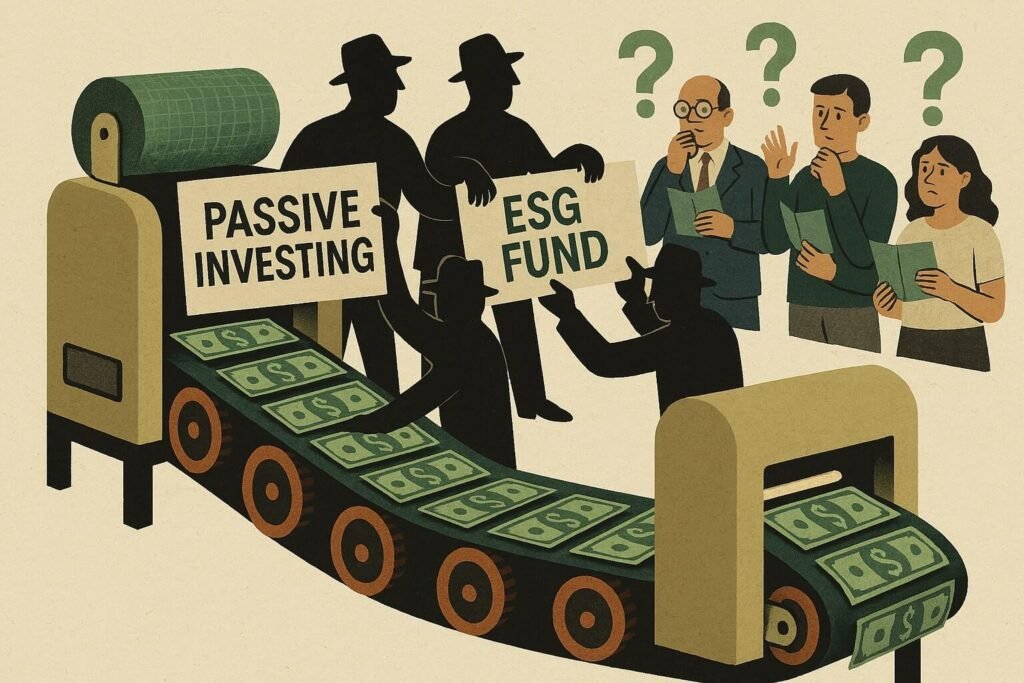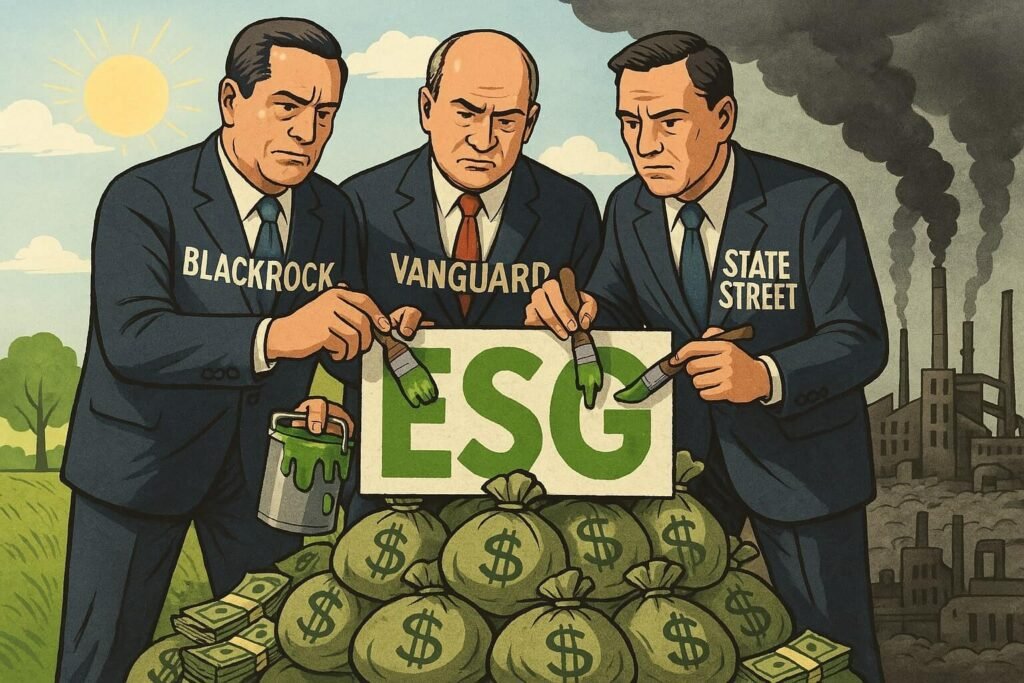Why the Big Three Embraced ESG?
(Hint: It’s Not What You Think)
For years, the world of investing followed a simple script: hand your money to a clever fund manager who’d supposedly beat the market. These managers, usually in expensive suits and flashy offices, promised to sniff out winning stocks before anyone else. The idea was that active investing—where humans pick and choose investments—was worth paying extra for.
But then something happened.
Passive investing quietly sneaked in through the back door. Instead of trying to beat the market, these passive funds just were the market. They tracked broad indexes like the S&P 500. They didn’t promise genius stock-picking. They simply promised cheap, steady exposure to the market.
And guess what? It worked. Really well.
Over the past decade or so, passive funds have outperformed many actively managed funds. Not because they were smarter, but because they cost less, traded less, and let the market do the work. As a result, trillions of dollars started flowing into these funds. And three companies found themselves sitting on an enormous pile of money: BlackRock, Vanguard, and State Street—a.k.a., the “Big Three.”
So now the question is: with all this power, why did they suddenly start banging the drum about ESG—Environmental, Social, and Governance investing?
Let’s take a closer look. And be warned—it might not be the feel-good story you’ve been told.
First: What Even Is ESG?
ESG investing means choosing companies not just for profits, but also for how they treat the planet, their employees, and their governance practices. In theory, it’s a way to make capitalism a bit less cold and ruthless.
Sounds noble, right?
That’s how it’s been sold, at least.
But ESG is also vague. Who decides what’s “green enough”? Who gets to say a company is “ethical”? There’s no standard rulebook. ESG scores differ wildly depending on who’s doing the scoring. It’s more art than science, often more branding than substance.
So when the Big Three started pushing ESG, eyebrows were raised. Was it because they really wanted to save the world?
Hmm.

Follow the Money
Let’s go back to those passive funds.
They’re simple, cheap, and effective. But they also have a problem: they don’t charge much.
Actively managed funds typically take 1% or more of your investment every year. Passive index funds? Often just a fraction of that—sometimes as low as 0.03%.
This is great for investors. But for the Big Three, it’s a volume game. They need trillions under management just to turn a decent profit.
Enter ESG.
It offers a way to repackage the same old index funds with a shiny new label—and charge a little more.
Think of it like selling organic vegetables at a markup. Same carrots, new label, higher price.
Suddenly, “sustainable” ETFs started popping up like mushrooms. Funds tracking “green” companies. Funds avoiding oil. Funds promoting diversity. Each one just different enough to justify a new fee, a new marketing campaign, a new story.
It’s capitalism’s favourite trick: turn a trend into a product.
The Influence Game
There’s another reason ESG became so appealing to the Big Three.
These firms now hold huge stakes in nearly every major publicly traded company in the West. Through passive index funds, they own chunks of Apple, Exxon, Amazon—you name it. That means they get voting rights at shareholder meetings. They can influence company policies. They have seats at the table, without ever needing to pick up a phone or negotiate a deal.
But here’s the catch: since they’re passive, they can’t sell a company just because they don’t like what it’s doing. They’re locked into owning whatever is in the index.
So how do you influence without divesting?
You go the ESG route. You vote on climate resolutions. You nudge boards to add more women. You pressure companies to clean up supply chains. It’s a soft power play.
And, let’s be honest, it also looks really good. It gives the impression that these financial giants are on the side of progress, without really changing how they do business.
Cynical? Maybe. But Not Wrong.
The irony is rich.
The very firms that made their fortunes on low-cost, hands-off investing are now positioning themselves as moral arbiters of the corporate world. ESG gave them a way to stay relevant, stay influential, and—crucially—add a new layer of revenue.
This doesn’t mean ESG is all bad. Some companies genuinely try to do better. And some investors do want their money aligned with their values.
But when you see the Big Three embracing ESG, it’s worth asking: is this about ethics? Or economics?
Because in a world where branding is everything, the line between values and value is getting thinner every day.
The ESG Backlash Begins
Of course, not everyone is buying it.
Lately, ESG has faced growing criticism. Some say it’s “woke capitalism.” Others argue it’s just a marketing scam. In the US, several states have even passed laws against ESG investing in state pensions, calling it politically motivated.
Ironically, the Big Three have started to back-pedal. They now talk less about ESG and more about “risk management” or “long-term value.” The ESG label itself is getting quietly dropped in some places.
It’s as if the party went on a little too long, and now the guests are slipping out the back door.
So, What Should You Believe?
Here’s the uncomfortable truth: money talks. And ESG, for all its lofty ideals, became a tool for making more of it.
The Big Three didn’t suddenly grow a conscience. They grew a strategy. ESG helped them defend their turf, raise new funds, and flex their muscle in boardrooms.
It’s not a moral revolution—it’s a marketing one.
So the next time someone tells you they’re investing in a “sustainable fund,” maybe ask a few questions. Like: Who defines “sustainable”? What are the fees? And who really benefits from this fund existing in the first place?
Because in the world of big finance, when something sounds too good to be true, it usually is.
Even when it comes dressed in green.


